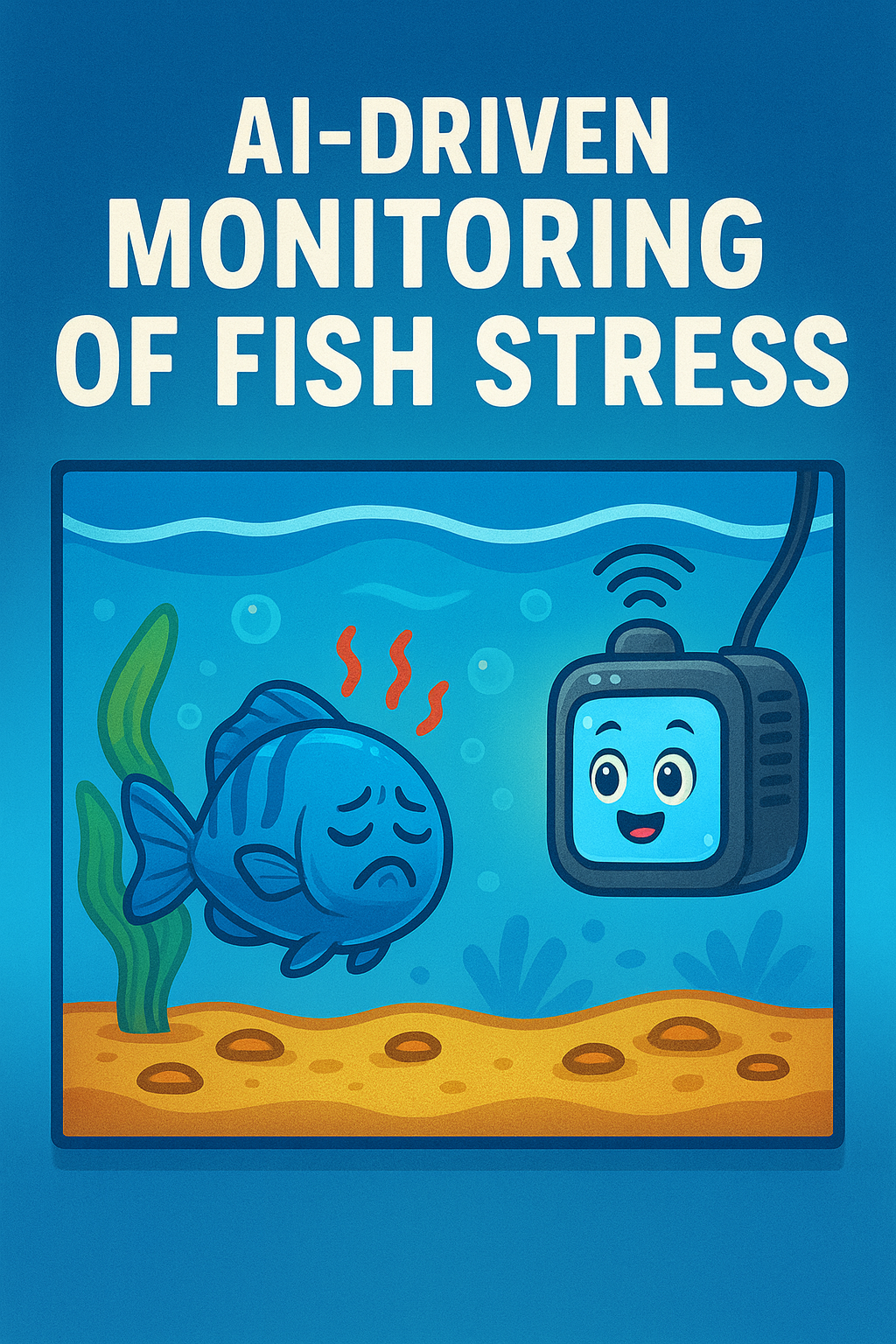AI-Driven Monitoring of Fish Stress
🤖 AI-Driven Monitoring of Fish Stress
🧩 1. What Stress Looks Like Before Symptoms
Fish stress has subclinical phases where the body is reacting but no visible symptoms appear:
- 🫁 Respiratory shifts → gill ventilation rate increases slightly, fish spend more time near aerated zones.
- 🧠 Behavioral micro-changes → tiny alterations in swimming speed, tail-beat frequency, shoaling spacing, depth preference.
- 🍽️ Feeding response → seconds slower to feed, less aggressive strikes.
- ⚡ Physiological markers (not visible): cortisol surge, lactic acid buildup, ion imbalance.
Humans usually only notice stress when it’s advanced (gasping at surface, clamped fins, color fading). AI can pick up these early, subtle cues.
📹 2. How AI Systems Monitor Stress
🔍 Data Sources
- 📷 Computer vision:
- Monitors tail beats, swimming path, schooling density, escape reflexes.
- Detects deviations from “baseline normal” behavior.
- 🌡️ Environmental sensors (IoT):
- DO, pH, NH₃/NH₄⁺, nitrite, temperature, salinity, turbidity.
- AI models predict fish stress response to chemical changes before fish show stress behavior.
- 🎤 Hydroacoustics:
- Underwater microphones detect fish-generated vibrations.
- Stressed fish make different tail-beat frequency patterns.
- 🧬 Advanced (research stage):
- Non-invasive cortisol detection (in water).
- AI correlates hormone spikes with stress conditions.
🧪 3. Effectiveness – What Studies Show
- Atlantic Salmon (Norway/Chile):
- AI detected stress 24–48 hrs before farmers did.
- 📊 85–95% accuracy distinguishing “healthy” vs “stressed” shoaling behavior.
- Tilapia (Asia, Africa):
- AI detected reduced feeding activity 1–2 days before mortalities rose.
- Accuracy: ~75–85%.
- Ornamentals (discus, guppies, koi – lab trials):
- AI models using computer vision detected micro-changes in swimming patterns with ~70–80% reliability.
- Still experimental — species-specific training needed.
⚠️ 4. Limitations
- 🎯 Species-specific data: A salmon-trained AI won’t “understand” discus unless retrained.
- 🔎 False positives: Light flickers, shadows, or camera bubbles can be flagged as stress.
- 📉 Invisible stressors: Parasites, bacterial infections may not alter behavior until late.
- 📊 Data-heavy: Needs thousands of hours of baseline data for training.
- 💰 Cost: Commercial aquaculture systems are pricey — hobby versions are rare.
🌱 5. Real-World Benefits
- 🐟 Aquaculture: Early stress prediction prevents mass mortalities → millions in savings.
- 🐠 Conservation & research: Monitoring endangered species without handling.
- 🏠 Hobby potential: Future AI webcams + smart sensors → alerts when fish are stressed before visible disease outbreaks.
📊 6. Predictive Workflow (Simplified)
- 📷 Observation → Camera/sensors collect baseline behavior & environment.
- 🤖 AI model → Compares current data vs historical “normal patterns.”
- ⚠️ Deviation detected → E.g., shoal density ↓, tail-beat ↑, DO ↓.
- 🧠 Prediction → AI flags stress with probability score (e.g., 85% likely).
- 👨🔬 Action → Farmer/aquarist adjusts aeration, flow, or checks for disease.
✅ Final Takeaway
- AI-driven systems can predict stress before visible symptoms — typically 24–48 hours earlier.
- Accuracy ranges:
- 🐟 Salmonids: 85–95%
- 🐠 Tilapia: 75–85%
- 🐡 Ornamentals: 70–80% (still developing)
- Best at catching environmental & behavioral stressors (low oxygen, poor water quality, crowding).
- Less effective at disease-only stress unless paired with waterborne hormone or pathogen detection.
- In practice: AI is a powerful decision-support tool — but human verification is still essential.

Impulsada por Lightspeed
Mostrar precios en:USD